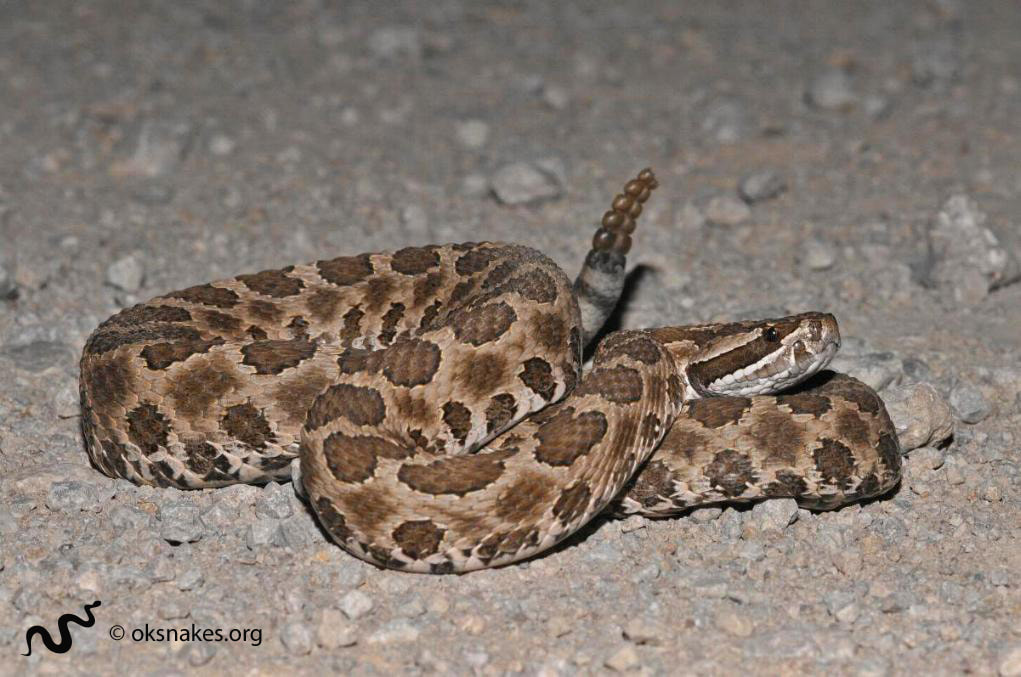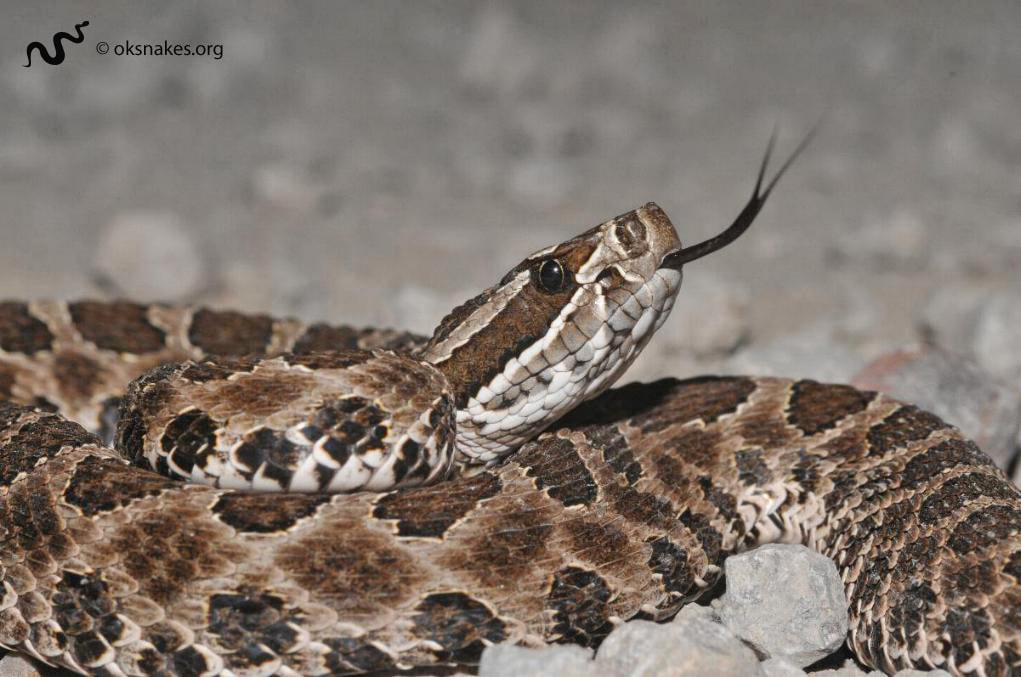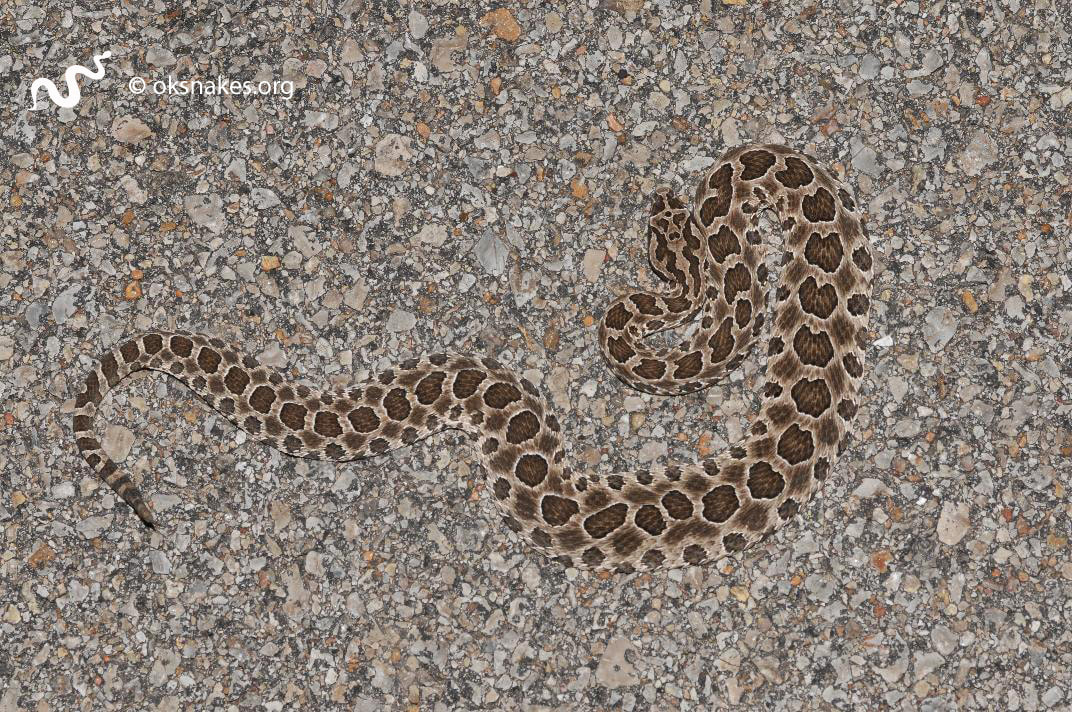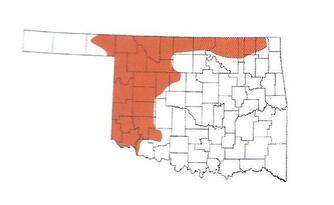Western massasauga rattlesnake
Sistrurus tergeminus
Sistrurus tergeminus
VENOMOUS
Description:
This rattlesnake has a row of dark brown blotches that run down the length of its back. It also has three small rows of lighter colored blotches along each side. This snake has keeled scales, a vertical pupil (not round *), and an obvious heat-sensing pit between the eye and nostril.
* Note: Pit viper pupils can often appear round in certain lighting, such as in photos utilizing a flash. Do NOT use pupil shape as a sole means to identify any snake in Oklahoma.
Size:
Adults 18 - 30 inches (46 - 76 cm)
Prey:
Small rodents, lizards, and frogs.
Reproduction:
Mates in early spring and gives birth to live young in late summer to early fall. Typically has 2 - 18 babies that are 6 - 9 inches (15 - 23 cm) long.
Habitat:
Grasslands, prairies, rocky hillsides, and swampy marshlands.
Other Information:
Massasauga means "great river mouth" in the Chippewa language and probably describes its habitat in Chippewa country.
Why doesn't the range map show this species in my county?
Description:
This rattlesnake has a row of dark brown blotches that run down the length of its back. It also has three small rows of lighter colored blotches along each side. This snake has keeled scales, a vertical pupil (not round *), and an obvious heat-sensing pit between the eye and nostril.
* Note: Pit viper pupils can often appear round in certain lighting, such as in photos utilizing a flash. Do NOT use pupil shape as a sole means to identify any snake in Oklahoma.
Size:
Adults 18 - 30 inches (46 - 76 cm)
Prey:
Small rodents, lizards, and frogs.
Reproduction:
Mates in early spring and gives birth to live young in late summer to early fall. Typically has 2 - 18 babies that are 6 - 9 inches (15 - 23 cm) long.
Habitat:
Grasslands, prairies, rocky hillsides, and swampy marshlands.
Other Information:
Massasauga means "great river mouth" in the Chippewa language and probably describes its habitat in Chippewa country.
Why doesn't the range map show this species in my county?



